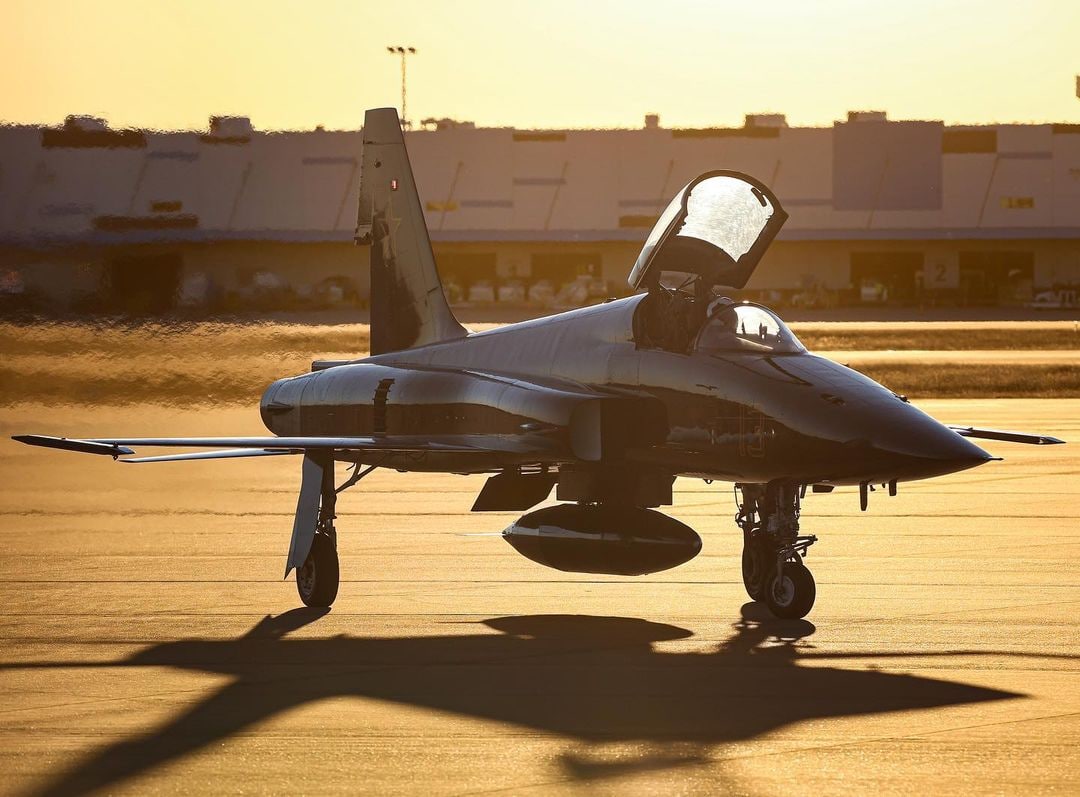Switzerland has handed over its first decommissioned F-5 Tiger fighter jet to the US military. The transfer marks the initial step towards fulfilling a contract signed back in 2020 involving 22 aircraft.
The Swiss Federal Office for Armaments (Armasuisse) announced that the United States Marine Corps (USMC) picked up the aircraft on March 18 from Emmen Air Force Station. The F-5 Tiger was transported aboard a Lockheed KC-130J transport aircraft.
The contract, valued at approximately USD 32.4 million, encompasses 16 single-seat F-5E and 6 twin-seat F-5F variants, along with associated ground equipment, spare parts, and logistical support.
The retired F-5 Tiger jets were originally procured by Switzerland in the 1970s and 1980s, serving faithfully for decades. A portion of this fleet, comprising 44 F-5s, had been sold to the US Navy in 2008 and is currently utilized for adversary training.
Presently, Switzerland retains 25 F-5 Tigers in its inventory, with 18 still in operational condition. These aircraft play various roles within the Swiss Army, including target display, training, towing, and test flights.

Approximately half of the F-5 Tigers are utilized by the renowned Patrouille Suisse aerobatic team for captivating flight demonstrations.
The Swiss Air Force is preparing for the introduction of the Lockheed Martin F-35 Joint Strike Fighter in 2028. Commanders have determined that the service lacks the necessity, manpower, funds, or facilities to maintain the F-5 Tiger fleet while transitioning to the F-35, as announced by service chiefs on March 15.
The decision to retire the F-5 Tiger fleet also stems from its outdated sensors and armaments, rendering them unsuitable for modern air policing duties.
As a result, the F-5 Tiger fleet has been reassigned to secondary tasks, such as target towing and training exercises, effectively relieving the workload of the F/A-18 Hornets.
Meanwhile, the retirement of the F-5 Tiger will also mark the end of an era for the Patrouille Suisse aerobatic team, which has showcased its skills with the F-5 since 1994, succeeding the Hawker Hunters.
However, there is a possibility that the service would designate the existing Swiss Air Force PC-7 display team, flying the Pilatus PC-7 turboprop trainer, as the primary aerobatic team.
On the other hand, the F/A-18 Hornet fleet will continue operations until 2030, following the introduction of the F-35.
Should Switzerland aim to maintain the operation of the Patrouille Suisse with the F-5 beyond 2027, it must allocate funds for ejection seats, aircraft avionics, and navigation systems.
The upkeep of at least 12 aircraft, including 10 single-seat and two twin-seat models, is crucial. Officials estimate that the investment would total around 9 million Swiss francs ($10.2 million). The Security Policy Committees in the Swiss Parliament will deliberate on these proposals.
F-5 Tiger Fighter Jet
Northrop Grumman Corporation’s F-5 tactical fighter series stands as a testament to enduring military aircraft design. Having served various nations for over four decades, the F-5 began its journey with its maiden flight on July 31, 1963, at Edwards Air Force Base, California.
From its first delivery in 1964 until its final one in 1989, each F-5 aircraft was delivered punctually, meeting or surpassing contractual obligations in terms of both cost and performance.
Known for its agility, maneuverability, and reliability, the F-5 proved to be a formidable supersonic fighter, boasting advanced aerodynamic design, powerful engine performance, and economical operational costs.
Northrop Grumman, along with Canada, Taiwan, the Republic of Korea, Spain, and Switzerland, collectively produced over 2,600 F-5 aircraft through co-production and licensing agreements.
Switzerland’s involvement in the F-5 program included the acquisition of 98 F-5Es and 12 F-5Fs under the Peace Alps and Peace Alps II initiatives.
While Northrop Grumman contributed to the production of 14 F-5Es and six F-5Fs, the majority of the Swiss aircraft were manufactured by the Federal Aircraft Factory (known today as RUAG Aerospace) in Emmen, Switzerland.
The final delivery to Switzerland occurred in March 1985, with Swiss variants boasting enhancements such as improved handling quality (IHQ) systems, a flatter nose, larger leading-edge root extensions (LERX), and automatic maneuvering flaps.
Additional upgrades included LN-33 inertial navigation systems (INS), AN/ALQ-87 radar warning receivers, AN/ALE-40 countermeasures dispenser systems (CDS), and Emerson Electric AN/APG-69 radars.
According to Northrop Grumman, approximately two-thirds of the original production of F-5 aircraft remains operational across 26 countries, including the United States. In the US, the Navy utilizes the F-5 in adversary squadrons to replicate enemy aircraft during aerial combat training exercises. Similarly, the US Air Force employs the F-5 in comparable training capacities.
- Contact the author at ashishmichel(at)gmail.com
- Follow EurAsian Times on Google News